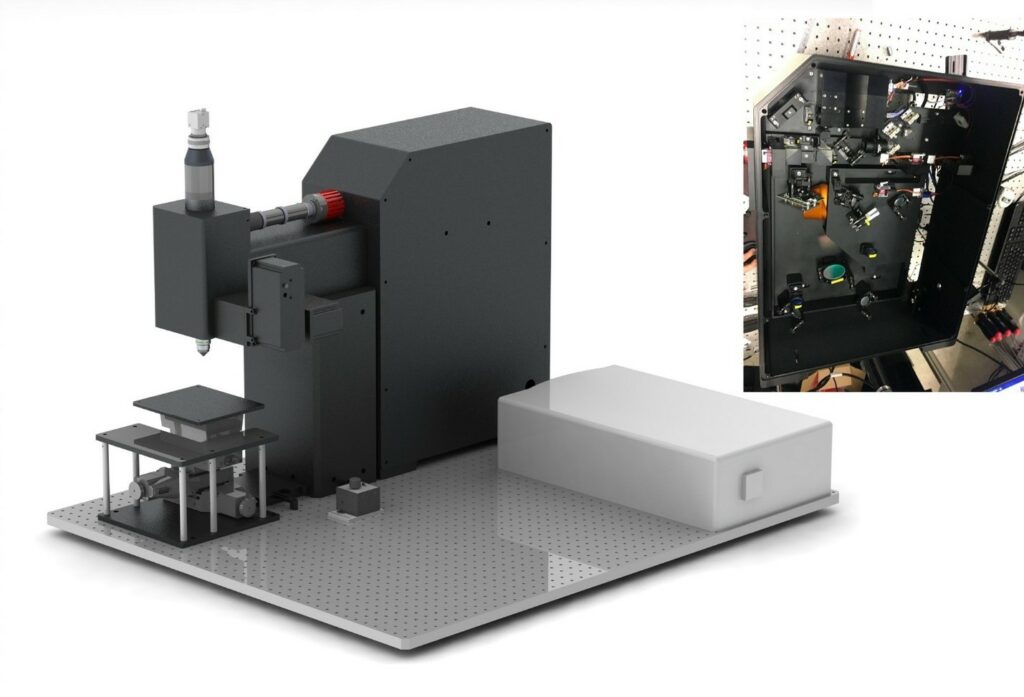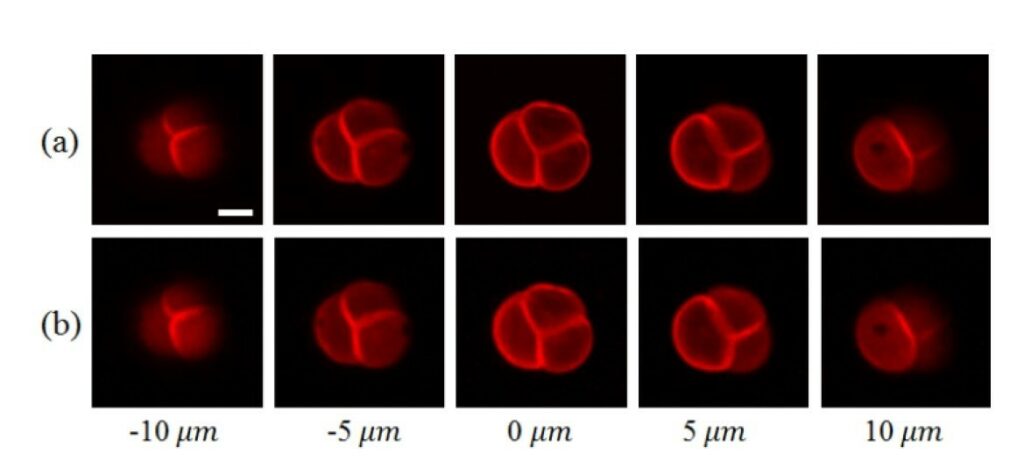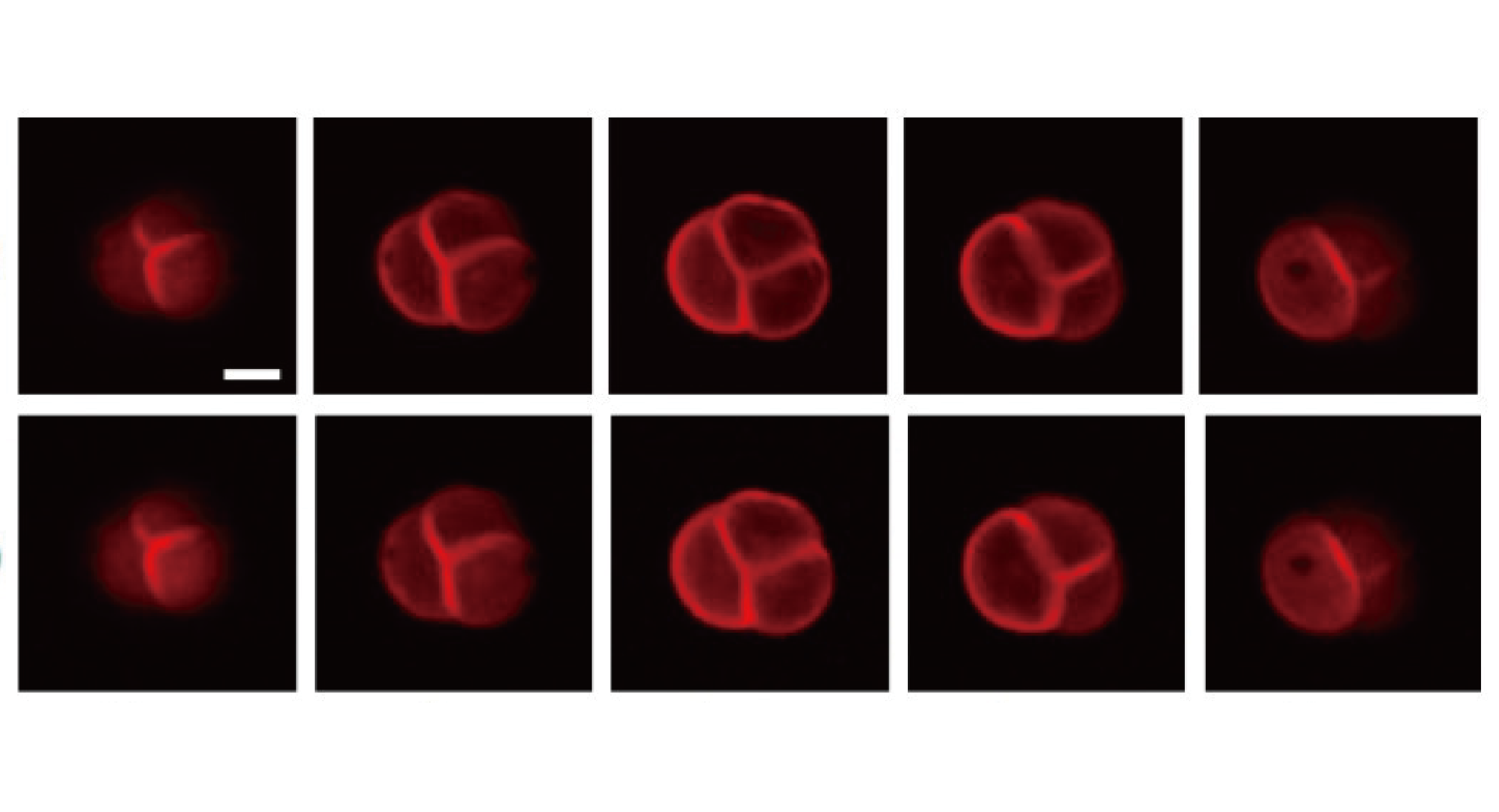Activities of neurons are generally completed on a time scale of 10 milliseconds, which makes it hard for conventional microscopes to observe these phenomena directly. On the contrary, two-photon microscopy works by delivering ultrafast pulses of infrared laser light to the sample, where it interacts with fluorescent labels to create an image. It is extensively used for biological researches because of its ability to produce high-resolution 3D images up to a depth of one millimeter in a living tissue or to monitoring activities from hundreds of neurons simultaneously. These advantages, however, come with a limited imaging speed of the two-photon microscopy because of the weak fluorescent signal.
To speed up scanning, this project developed a multi-focus laser illumination method that uses a digital micromirror device (DMD). The new approach is able to produce two-photon microscopy images of a 3D sample in one second without sacrificing the resolution, which is at a speed three to five times that of the conventional point-scanning method. The research solves the problem of conventional DMD being unusable to work with ultrafast laser, enabling them to be integrated and used in beam shaping, pulse shaping, and two-photon imaging. We further increased the imaging speed in this research by combining multi-focus scanning with compressive sensing. This approach enables image acquisition with fewer measurements. This is because it carries out image measurement and compression in a single step and then uses an algorithm to rebuild the images from the measurement results. Experiments demonstrated the technique’s ability to produce high-quality 3D images with high imaging speeds from any field of view. For example, they were able to acquire 3D images from a pollen grain, in just 0.55 seconds. The same images acquired with traditional point scanning took 2.2 seconds.
Reference:
C. Wen, M. Ren, F. Feng, W. Chen, and S. Chen, “Compressive Sensing for Fast 3-D and Random-access Two-photon Microscopy,” Optics Letters, 44(17): 4343-46, 2019.


